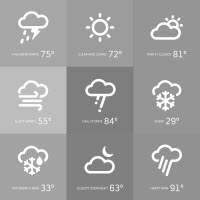Poison Hemlock is being said to grow everywhere in Sierra Valley.
Latest news is it's in the vicinity of where crews are digging to get to the Loyalton water valve to stop a massive leak.
It's highly toxic! Caution should be taken if cutting it.
Poison hemlock is a highly toxic biennial with the musty, unpleasant odor associated with alkaloids. It grows two to ten feet tall. The stems are ribbed and hollow with purplish streaks or splotches. Poison hemlock reproduces by seeds that fall near the plant and disperse via fur, birds, water, and, to a limited extent, wind. Most seeds fall from September through December, but they can fall as late as the end of February. The seeds germinate in the fall, but the plant usually does not produce flowers until the second spring.
Leaves
The leaves have some resemblance to ferns. They are opposite and compound, with the leaflets divided into narrow segments. When crushed, the leaves emit a rank odor.
Flowers and Fruits
The small, white or yellowish flowers have five petals that bloom above the ovary. The flowers are borne in many umbrella-shaped clusters at the end of the flower stalks. Underneath each cluster are four to six brown bracts. The fruit is egg-shaped in outline, with distinctive wavy ribs on the surface. It is composed of two dry halves, each with one seed, that eventually separate from each other. The fruit is 2-3 mm wide.
Latest news is it's in the vicinity of where crews are digging to get to the Loyalton water valve to stop a massive leak.
It's highly toxic! Caution should be taken if cutting it.
Poison hemlock is a highly toxic biennial with the musty, unpleasant odor associated with alkaloids. It grows two to ten feet tall. The stems are ribbed and hollow with purplish streaks or splotches. Poison hemlock reproduces by seeds that fall near the plant and disperse via fur, birds, water, and, to a limited extent, wind. Most seeds fall from September through December, but they can fall as late as the end of February. The seeds germinate in the fall, but the plant usually does not produce flowers until the second spring.
Leaves
The leaves have some resemblance to ferns. They are opposite and compound, with the leaflets divided into narrow segments. When crushed, the leaves emit a rank odor.
Flowers and Fruits
The small, white or yellowish flowers have five petals that bloom above the ovary. The flowers are borne in many umbrella-shaped clusters at the end of the flower stalks. Underneath each cluster are four to six brown bracts. The fruit is egg-shaped in outline, with distinctive wavy ribs on the surface. It is composed of two dry halves, each with one seed, that eventually separate from each other. The fruit is 2-3 mm wide.
